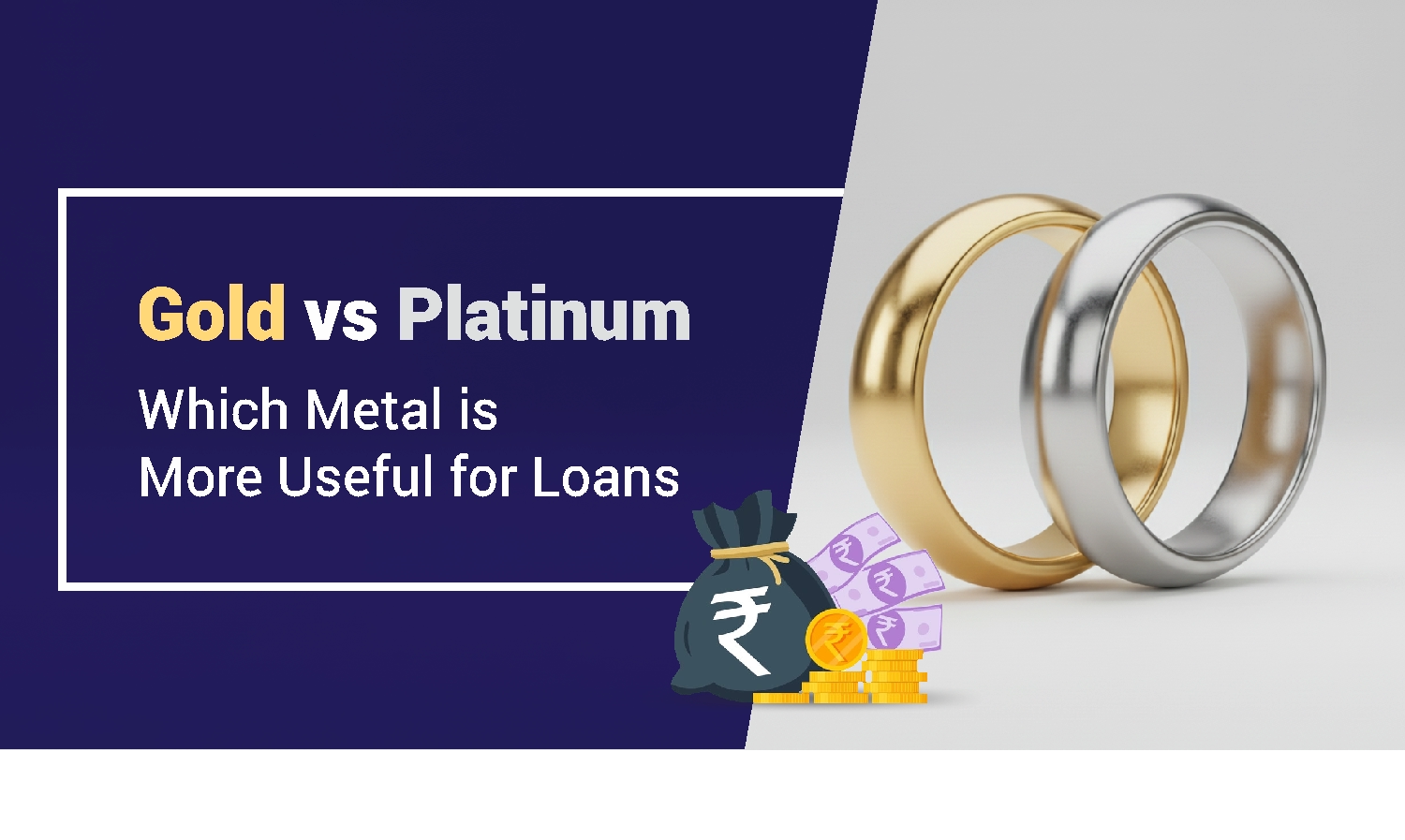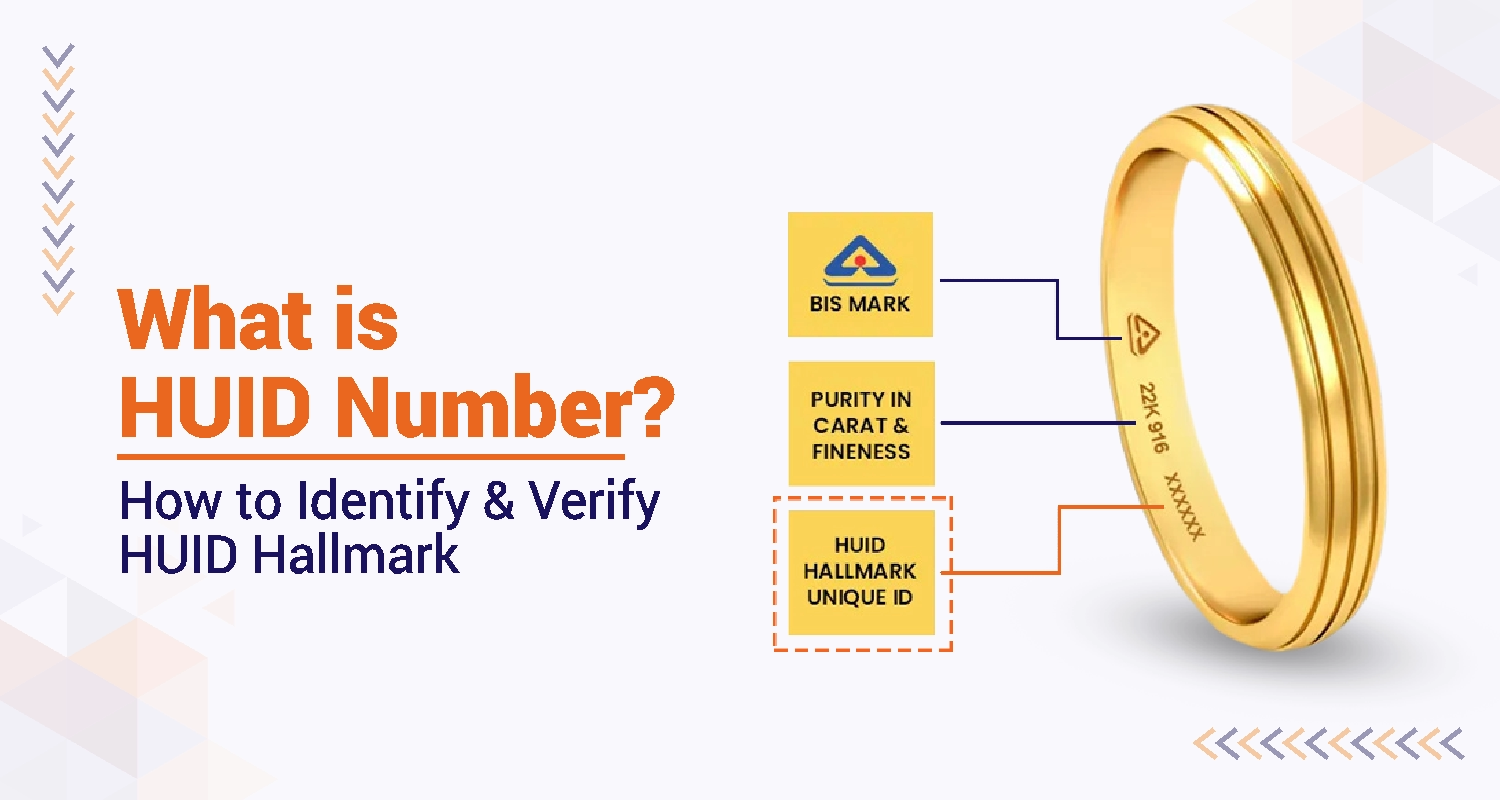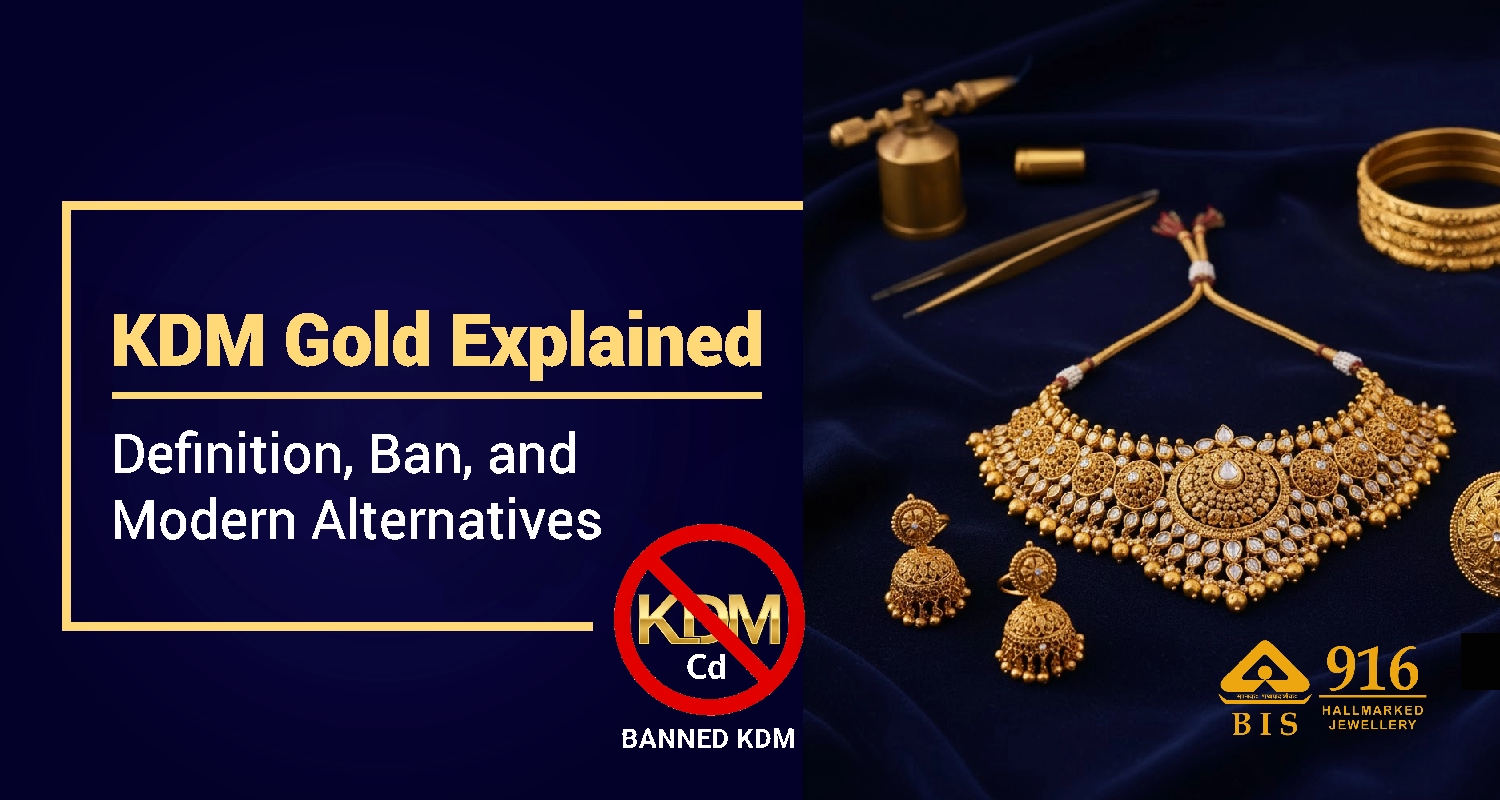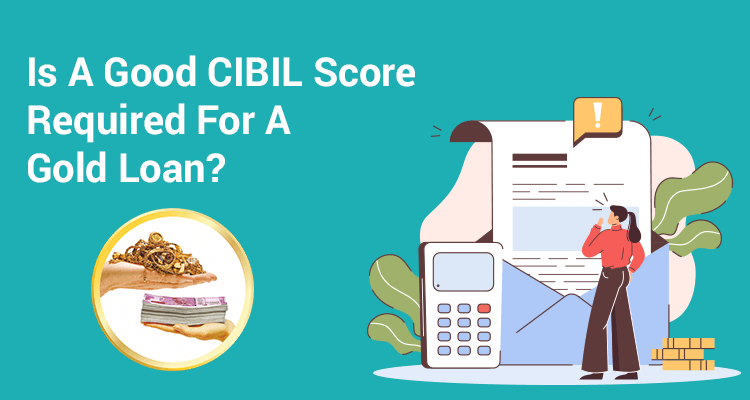GST on Gold in India: Gold GST Rate, Jewellery Tax & Impact Explained
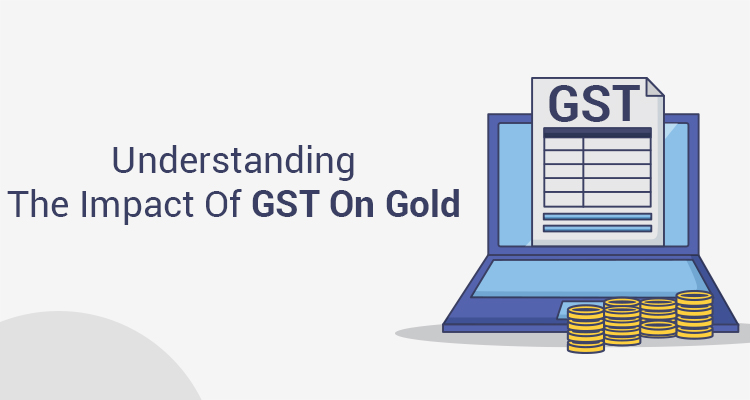
Gold is more than a cultural symbol in India; it is also a valuable asset that can be used as collateral. The Goods and Services Tax (GST) brought a major change in the taxation system for various sectors. In this article, we will explore how GST affects gold loans, and what it means for borrowers, lenders, and the gold market.
Gold is not just a shiny stone. It is India's cultural heritage; we Indians love gold so much that our country is nicknamed “sone ki chidiya,” a golden bird. Apart from being a popular choice of ornament material, it is also a favored investment avenue that underwent a significant tax transformation with the advent of the Goods and Services Tax (GST) in 2017. This change in taxation has not only reshaped the cost structure of gold, but also gold tax rate. Still, it has also reverberated across its demand and supply dynamics within the country.
Let’s explore in detail the various aspects of GST on gold, what is the existing gold GST rates, and how GST on gold jewellery and gold loans is applied.
What is GST on Gold in India?
GST is an indirect tax that replaced multiple taxes levied on different sectors. However, some financial services, such as loans, were excluded from GST. This applies to gold loans as well. The interest paid on gold loans is not subject to GST, as it is considered a compensation for the money lent and is therefore exempt.
However, there is a difference between the interest paid on gold loans and the processing fees charged by the lender. While interest is exempt from GST, processing fees are not. These fees are seen as a service provided by the lender and are therefore taxable under GST.
To understand the impact of GST on gold jewellery, let's compare prices before and after its introduction. We'll look at what taxes were applied earlier and how GST replaced them. For assumption purposes, let’s consider the base price of 10 gm gold as Rs. 1,00,000.
|
Particulars |
Before GST (₹) |
Under GST (Not as a composite supply) (₹) |
Under GST (As a composite supply) (₹) |
|
Base price of 10 gm gold (Assumed) |
1,00,000 |
1,00,000 |
1,00,000 |
|
Add: Customs duty (6%) |
6,000 |
6,000* |
6,000* |
|
Assessable value for service tax |
1,06,000 |
1,06,000 |
1,06,000 |
|
Add: Service tax (1%) |
1,060 |
Nil |
Nil |
|
Assessable value for VAT |
1,07,060 |
1,06,000 |
1,06,000 |
|
Add: VAT ( 1%**) |
1,071 |
Nil |
Nil |
|
Assessable value for GST |
1,08,131 |
1,06,000 |
1,06,000 |
|
Add: GST on gold at 3% |
Nil |
3,180 |
— |
|
Total value of gold |
1,08,131 |
1,09,180 |
1,06,000 |
|
Add: Making charges at 5%^ (On base price+customs duty) |
5,300 |
5,300 |
5,300 |
|
Assessable value for GST |
1,13,431 |
1,14,480 |
1,11,300 |
|
Add: GST on making charges at 5% |
Nil |
265 |
— |
|
Add: GST on gold jewellery at 3%^^ (For composite supply) |
— |
— |
3,339 |
|
Total value of gold jewellery |
1,13,431 |
1,14,745 |
1,14,639 |
Current Gold GST Rate in India
| Item | GST Rate |
|---|---|
| Gold Bars | 3% |
| Gold Jewellery | 3% |
| Gold Coins | 3% |
| Making Charges | 5% |
Under the GST regime, gold is taxed at a fixed rate of 3%, and making charges on gold jewellery attract an additional 5% GST. This rate structure has been in effect since GST was implemented in July 2017.
Note - Making charges on gold jewellery attract 5% GST in addition to the 3% GST on gold value.
How is gold GST rate is calculated?
If you tried buying gold before 2017, you must know how difficult it is to calculate gold tax in India, as you also had indirect taxes, like excise duty, VAT, and customs duty. But GST saves us from this number crunching and gives us a simple add-on of 3%. So you play the price of gold plus 3% GST. That's it for solid coins or bars of gold. But only some buy gold to keep in vaults. You may want to make jewelry out of it, this is how you will calculate GST on gold ornaments, the gold's value plus the making charges, while the making charges themselves are subject to a 5% GST rate, separately appended to the bill.
As per the GST regime laid down by the Reserve Bank of India (RBI), a fixed tax rate of 3% is applied on gold and an additional 5% GST on the making charges of gold jewellery with effect from July 2017 when GST was first implemented.
Example Calculation:
Gold value (10 gm) = ₹60,000
Making Charges = ₹1,500
3% GST on ₹50,000 = ₹1,800
5% GST on ₹1,000 = ₹75
Total GST = ₹1,800 + ₹75 = ₹ 1,875
Final Price = ₹63,375
How To Calculate GST On Gold Jewellery
To calculate GST on gold, you need to know the GST rates that apply to different aspects of gold. For example, if you buy gold jewellery worth Rs. 50,000, you have to pay 3% GST on the value of the jewellery, which is Rs. 1,500. This does not include the making charges, which are taxed separately.
GST Rates For Gold Ornaments
Gold ornaments are a valuable asset for many people. The introduction of GST on gold imports in india replaced the earlier customs duty and additional taxes. Before GST, there were various state-level taxes that caused price differences across regions. Now, there is a uniform GST rate of 3% on gold, which makes buying ornaments easier.
Gold Price After GST
GST also affected the gold price in the country. Before GST, the gold price was subject to different taxes, which caused price variations. With GST on gold, there is a single tax rate, which makes the gold price more consistent. However, the international gold price still affects the domestic gold price.
GST Exemptions For Gold
Indian gold exports received a boost in 2018 with a GST exemption. Check out the role of the functions of GST Council in decisions related to tax exemptions. This exemption directly targets the burden of GST on exporters, making their products more competitive in the international market.
It's important to note that this exemption applies specifically to business-to-business transactions. Domestic consumers purchasing gold jewellery within India are not impacted by this exemption and will still pay the standard 3% GST on the gold and 5% GST on making charges.
GST Impact On Gold
GST had both positive and negative effects on gold. On the positive side, it simplified the tax system and removed the complexities of the previous system. On the negative side, it raised concerns in the gold industry. Many jewellers and industry players worried that the 3% GST rate would reduce consumer demand. It is important to note that only 30% of this industry is organized.
E-Way Bill Rules For Gold and Its Form
The e-way bill system under GST also affected the transport of gold and other precious metals. An e-way bill is a document that the person in charge of the conveyance carrying any consignment of goods must have. There are specific rules for the movement of gold and other precious metals. The e-way bill has to be generated when the value of the goods transported is more than Rs. 50,000. It's a digital waybill that allows the smooth movement of goods across state borders.
In conclusion, GST's effect on gold loans and the gold market reflects the wider changes that GST brought to the Indian economy. The interest exemption from GST gives relief to borrowers who need financial help against their gold assets. However, the GST on processing fees highlights the importance of knowing the complete cost structure of a gold loan. The uniform GST rate on gold purchases has simplified pricing and removed regional differences. As the financial landscape keeps changing, being aware of GST rules helps borrowers, lenders, and industry players make informed decisions in the world of gold loans.
What is GST Rate on Import of Gold?
Given India's substantial reliance on gold imports due to low domestic production, the import of gold incurs a customs duty of 10%, computed on the gold's value along with the basic customs duty. Additionally, the GST on gold imports in India is set at 3%, which includes the basic customs duty and the integrated GST (comprising central GST and state GST), typically amounting to 18% across most states.
GST Rate on Purchase of Physical Gold
The acquisition of physical gold, encompassing bars, coins, biscuits, or jewelry, attracts a 3% GST, applied to the gold value and any associated making charges. The making charges, differing based on the intricacy of craftsmanship, incur a separate 5% GST, payable by the buyer.
GST on Digital Gold Purchase
When you are buying gold to invest, it can be a task to buy and sell physical gold. Plus, having something so valuable on you comes with a risk of getting lost or stolen. Hence, we have something called digital gold. Digital gold is a form of gold investment that allows the buyer to purchase gold online and store it in a secure vault. The buyer can sell or redeem the gold anytime without having to worry about the storage, security, or purity of the gold. The GST on digital gold purchases is 3%, which is applied to the value of gold. The GST is collected by the seller and paid to the government. The buyer does not have to pay any additional GST on the sale or redemption of the digital gold. So you pay no extra cost on your investment.
Strategies to Minimize GST Impact:
Minimizing the GST impact on gold in India requires strategic planning.
- Consider purchase timing: Opt for times outside peak demand seasons like weddings and festivals, when gold prices might be slightly lower due to potentially lower overall demand.
- Compare making charges: The 5% GST on making charges can vary between jewellers. Research and compare charges to potentially reduce the overall GST impact on gold jewellery.
- Explore alternatives: Consider digital gold or government-minted gold coins, which often attract lower GST rates compared to traditional jewellery.
Opt for transparent billing: Ensure the jeweller provides a clear breakdown of the gold price (before GST), making charges (before GST), and the final GST amount. This transparency allows for informed decision-making.
Input Tax Credit Availability for GST on Gold Business
India's GST system offers relief for gold businesses through Input Tax Credit (ITC). Jewellers can claim ITC on GST paid for:
- Raw Gold: This helps reduce the overall GST burden on the final product.
- Job Work Charges: Expenses associated with processing gold for jewellery making are also eligible for ITC.
Importantly, even if a jeweller pays GST on supplies from an unregistered job worker (through a mechanism called a reverse charge), they can still claim ITC for the tax paid.
By effectively claiming ITC, jewellers can reduce their overall GST liability. This can potentially lead to lower consumer prices, making gold jewellery more competitive in the market.
The Two Sides of the Coin: How GST Affects India's Gold Market
The arrival of GST in India has had a significant impact on the gold industry, bringing both challenges and opportunities.
Price Rise and Lower Demand: One major consequence is the rise in gold prices. GST replaced earlier taxes with a higher 3% levy, making gold more expensive. This, combined with a 5% GST on making charges for jewellery, has dampened consumer demand for gold and impacted its liquidity as an investment.
Transparency Gain: However, GST also introduced a positive change. By mandating documentation for all gold transactions, it has brought much-needed accountability and transparency to a sector where only 30% falls under organized structures.
External Influences: It's important to recognize that factors beyond GST have also contributed to the price surge. Fluctuations in exchange rates, decreased domestic gold mining, and rising international gold prices all play a role.
A Glimpse of Hope for Exporters: For exporters, there's a potential benefit. Free Trade Agreements, like the one with South Korea, allow GST-registered importers to bring in gold without the additional 10% customs duty. This could make Indian gold exports more competitive in the global market.
Conclusion
Undoubtedly, GST represents a fundamental shift in India's tax landscape, streamlining the indirect taxation system. However, this reform has yet to be without consequences. The 3% GST on gold, applied to both the gold's value and making charges, has augmented the overall cost of this precious metal. Yet, avenues exist for savvy buyers to mitigate this impact. Through informed choices and alternative investment routes, individuals can navigate the GST landscape while continuing to invest in the enduring allure of gold.
Frequently Asked Questions
Ans- In India, there is a 3% GST on gold. Additionally, jewellers add a GST making charge of 5% to the price.
A person who imports gold for the purpose of selling gold jewellery may be required to pay 3% IGST. He may claim the GST on the imported gold. However, those who do not work in the gold industry are not eligible for a tax credit.
As per the new rules on gold purchase with respect to GST, 3% GST will be charges and jewellers will add another 5%of the price as making charges. An e-way bill will also be created for transportation of the gold.
Irrespective of the carat of gold, a 3% GST will be applicable on all gold.
Similar to buying physical gold, there is a 3% GST on all insurance premiums, storage costs, and trustee fees for digital gold.
GST has increased the cost of gold as it subsumes various taxes that were levied on gold before, such as excise duty, VAT, and customs duty. GST also applies to the charges for making gold jewellery, which vary from one jeweller to another. GST has affected the demand and supply of gold, as some consumers may postpone or reduce their purchases due to higher prices. GST has also impacted gold importers, exporters, and traders, as they have to comply with the GST rules and regulations.
Hallmark gold jewellery is gold jewellery that bears the mark of purity and quality certified by the Bureau of Indian Standards (BIS). The GST price on hallmark gold jewellery is the same as the GST price on any other gold jewellery, which is 3% on the value of gold plus 5% on the making charges. The GST is payable by the buyer, not by the jeweller.
No, the purity of gold does not affect the GST rate on gold. The GST rate on gold is 3%, irrespective of the purity or carat of gold. The GST rate on gold is also the same for different forms of gold, such as bars, coins, biscuits, or jewellery.
Yes, you have to pay the same GST for the same gold ornaments weight across India, as GST is a uniform tax that applies to the whole country. However, the final price of gold ornaments may vary from one state to another, depending on the local taxes, transportation costs, and market conditions.
GST does not apply to the interest on gold loans, but it may affect the overall cost through processing fees. The gold loan per gram value depends mainly on the purity of the gold and current market rates, not GST. However, understanding gold taxation helps you assess the true cost of borrowing.
Disclaimer : The information in this blog is for general purposes only and may change without notice. It does not constitute legal, tax, or financial advice. Readers should seek professional guidance and make decisions at their own discretion. IIFL Finance is not liable for any reliance on this content. Read more

